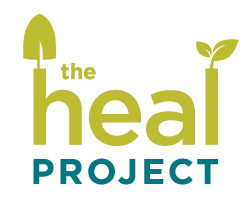Interview with Doniga Markegard, Rancher at Markegard Family Grass-Fed
Interviewed by Chapin Dorsett, Communications & Operations Manager for The HEAL Project
Chapin - Let’s start with a bit about your background. What got you interested in ranching and permaculture?
Doniga - I was raised in a rural area in Washington, and my family grew a lot of our own food. We lived close to the land and I grew up on a big river. During high school, I took an alternative path and went to a wilderness school where I studied wildlife tracking, wilderness survival and other nature skills. That connection to nature during my upbringing has influenced everything I do now in my life. I’ve also worked on some organic farms and had a permaculture business for a while. When I met my husband, I had been studying holistic management of grasslands that emphasizes stewardship for diversity and the healing of watersheds.
Photo from www.markegardfamily.com with permission.
C - Can you tell us about Markegard Family Grass-Fed, the regenerative ranch that you started with your husband?
D - We’ve been doing this for 15 years, now. We raise 100% grass-fed beef and lamb in addition to pasture-raised pork and chicken. We sell our meat at farmers’ markets, through a CSA, on our web shop and in some restaurants.
C - What are some of the regenerative ranching techniques that Markegard employs?
D - We keep our animals moving so that they’re never stagnant in one place. By moving the animals, they actually help to stimulate the grass growth. It’s a way we can keep the animals healthy and the grasslands healthy. When you move the animals around, you’re allowing grasses to grow, meaning they can photosynthesize. The photosynthesis draws down carbon into the soil. Grasslands evolved with large herds of grazing animals, so they require a level of disturbance to stay healthy. Without animals trampling, eating and pooping on the grass, you end up with less diversity because one grass species will take over. You also get patches of bare ground because plants will die and then fold over and not allow for other types of plants to reach the sunlight. By using regenerative agriculture practices, we are able to see incredible results in the drawdown of carbon into the soil.
Photo from www.markegardfamily.com with permission.
C - How do you measure the amount of carbon drawdown into the soil?
D - We have soil scientists come to the ranch to take measurements. We work with Point Blue Conservation Science, and they take measurements on ranch land. A common measurement is of soil organic matter. An increase in soil organic matter means an increase in carbon storage in the soil. Another measurement is depth; there is deep and shallow carbon. The deep carbon is important because it’s long-term storage.
C - What has your involvement been with policy and advocacy?
D - Because of the regenerative work that we’re doing, we’re going against the grain. We’re not following in the path of industrial agriculture. We’ve been trailblazers for this movement from the beginning, so we need to be advocates for the work that we’re doing. There isn’t a whole lot of policy right now that supports regenerative agriculture. Right now, it favors the larger, more consolidated farms and ranches, so we have to be advocates for that change.
C - What’s it like to work with your family?
D - It’s great, especially with our kids. It’s so nice to have the kids outside and working with the animals. I just think it’s so important. All of the kids have their own things that they each love to do. They’re great on horseback, and can gather cattle or check fence or work at the markets. It’s just nice to be out there with the kids and to have them really involved in all aspects of the operation. They have a tangible view of what we do as a family—it’s not like their parents go off to work and do something on a computer and then come home. The kids know that the work they do with their hands is producing healthy products that are really making an impact. They can choose whether they want to continue on with this later, but the lessons that they’re learning now will stay with them through life.
Photo from www.markegardfamily.com with permission.
C - Is there a specific project you’re currently working on that gives you optimism for the future?
D - There are a number of projects I’m working on right now, but one is that I’m in the process of certifying our ranch with the Audubon Society. We would be the first ranch in the state of California to be certified by them. Basically, the logic is that we are selling a product that has been proven to be bird friendly. Our ranching practices preserve habitat for grassland bird species, which is a group of birds at high risk right now. It makes me excited to align with a large group like the Audubon Society that views ranchers as an integral component in the conservation of grassland species.



